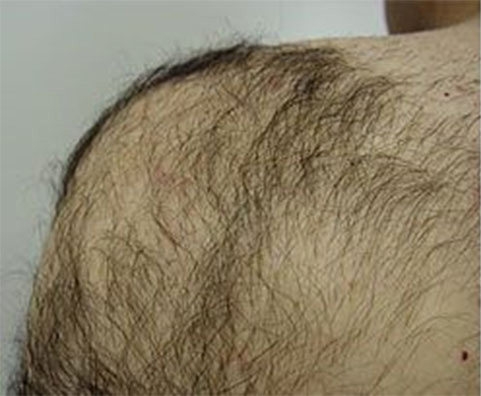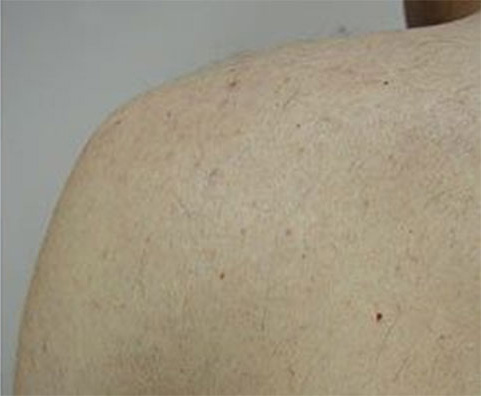Hair Reduction
Hair Reduction
Laser hair removal is a medical procedure that uses a concentrated beam of light (laser) to remove unwanted hair.
During laser hair removal, a laser emits a light that is absorbed by the pigment (melanin) in the hair. The light energy is converted to heat, which damages the tube-shaped sacs within the skin (hair follicles) that produce hairs. This damage inhibits or delays future hair growth.
Although laser hair removal effectively delays hair growth for long periods, it usually doesn't result in permanent hair removal. Multiple laser hair removal treatments are needed for initial hair removal, and maintenance treatments might be needed as well. Laser hair removal is most effective for people who have light skin and dark hair, but it can be successfully used on all skin types.
Laser hair removal is used to reduce unwanted hair. Common treatment locations include legs, armpits, upper lip, chin and the bikini line. However, it's possible to treat unwanted hair in nearly any area, except the eyelid or surrounding area.
Hair color and skin type influence the success of laser hair removal. The basic principle is that the pigment of the hair, but not the pigment of the skin, should absorb the light. The laser should damage only the hair follicle while avoiding damage to the skin. Therefore, a contrast between hair and skin color — dark hair and light skin — results in the best outcomes.
The risk of damage to skin is greater when there is little contrast between hair and skin color, but advances in laser technology have made laser hair removal an option for people who have darker skin. Laser hair removal is less effective for hair colors that don't absorb light well: gray, red, blond and white. However, laser treatment options for light-colored hair continue to be developed.
Risks of side effects vary with skin type, hair color, treatment plan and adherence to pre-treatment and post-treatment care. The most common side effects of laser hair removal include:
Skin irritation. Temporary discomfort, redness and swelling are possible after laser hair removal. Any signs and symptoms typically disappear within several hours.
Pigment changes. Laser hair removal might darken or lighten the affected skin. These changes might be temporary or permanent. Skin lightening primarily affects those who don't avoid sun exposure before or after treatment and those who have darker skin.
Rarely, laser hair removal can cause blistering, crusting, scarring or other changes in skin texture. Other rare side effects include graying of treated hair or excessive hair growth around treated areas, particularly on darker skin.
If you're interested in laser hair removal, choose a doctor who's board certified in a specialty such as dermatology or cosmetic surgery and has experience with laser hair removal on your skin type. Before laser hair removal, schedule a consultation with the doctor to determine if this is an appropriate treatment option for you.
The doctor will also offer specific instructions to prepare for laser hair removal. These might include:
Staying out of the sun. Follow your doctor's advice for avoiding sun exposure before and after treatment. Whenever you go out, apply a broad-spectrum, SPF30 sunscreen.
Lightening your skin. Avoid any sunless skin creams that darken your skin. Your doctor might also prescribe a skin bleaching cream if you have a recent tan or darker skin.
Avoiding other hair removal methods. Plucking, waxing and electrolysis can disturb the hair follicle and should be avoided at least four weeks before treatment.
Avoiding blood-thinning medications. Ask your doctor about what medications, such as aspirin or anti-inflammatory drugs, to avoid before the procedure.
Shaving treatment area. Trimming and shaving is recommended the day before laser treatment. It removes hair above the skin that can result in surface skin damage from burnt hairs, but it leaves the hair shaft intact below the surface.
Laser hair removal usually requires three to six treatments. The interval between treatments will vary depending on the location. On areas where hair grows quickly, such as the upper lip, the treatment might be repeated in four to eight weeks. On areas of slow hair growth, such as the back, the treatment might be every 12 to 16 weeks. For each treatment you'll wear special goggles to protect your eyes from the laser beam. An assistant might shave the site again if necessary. The doctor might apply a topical anesthetic to your skin to reduce any discomfort during treatment.
After laser hair removal and between scheduled treatments, avoid sunlight and don't use a tanning bed for six weeks or as directed by your doctor. Use a broad-spectrum SPF30 sunscreen daily.
Hairs do not fall out immediately, but you will shed them over a period of days to weeks. This may look like continued hair growth. The repeated treatments are usually necessary because hair growth and loss naturally occur in a cycle, and laser treatment works best with hair follicles in the new-growth stage. Results vary significantly and are difficult to predict. Most people experience hair removal that lasts several months, and it might last for years. But laser hair removal doesn't guarantee permanent hair removal. When hair regrows, it's usually finer and lighter in color.



Frequently Asked Questions
Get Appointment
Time Shedule
Working Hours
- Mon - Sun : 9:00am - 06:00pm
- Closed on Poya and Mercantile holidays